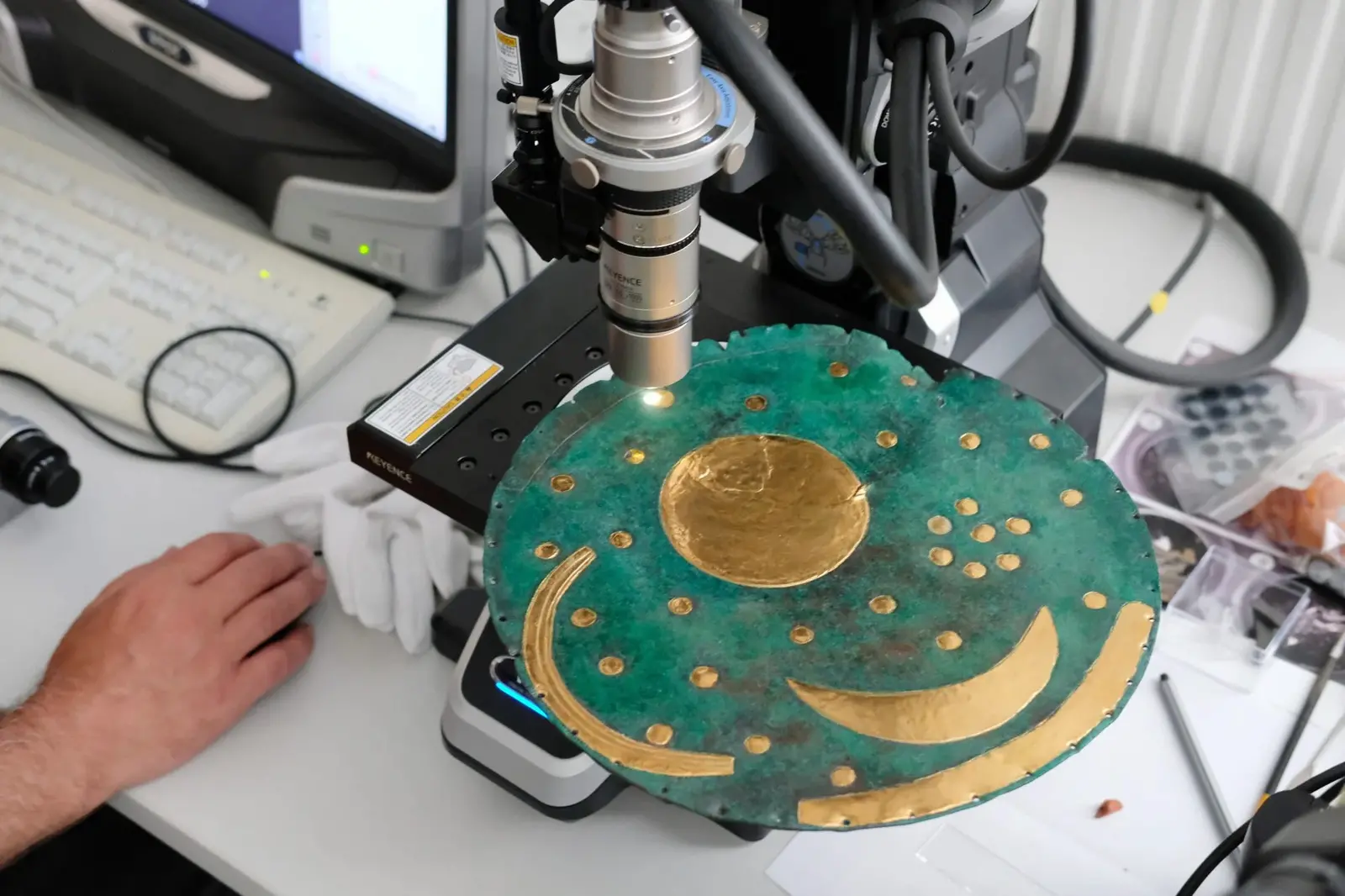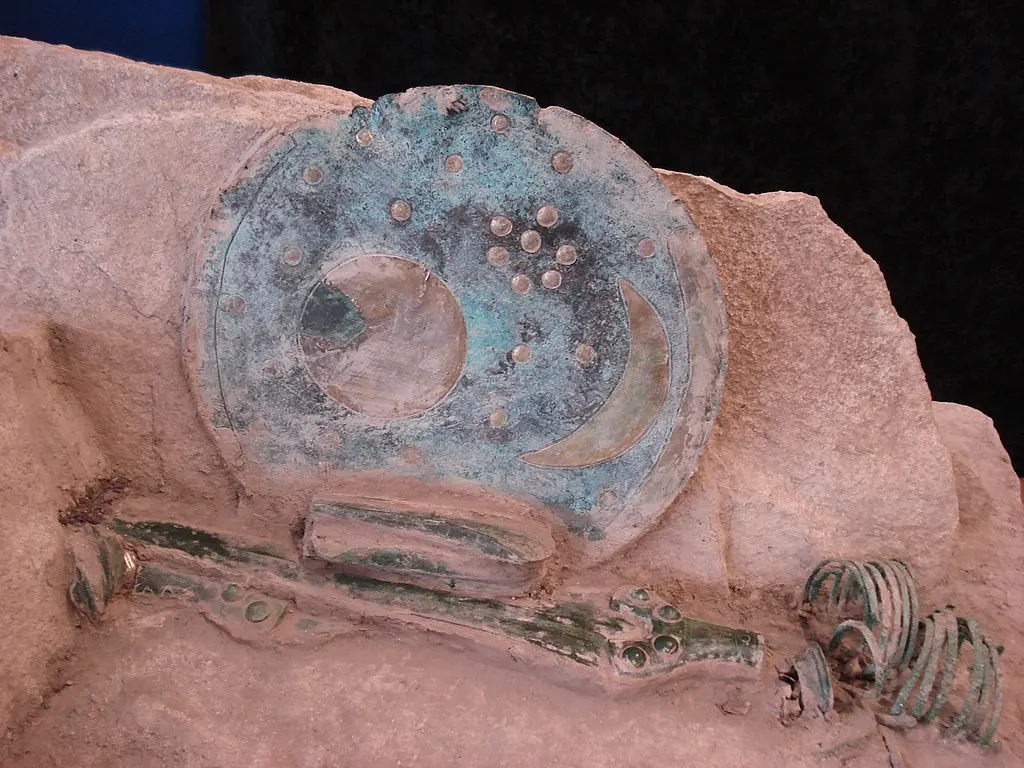Imagine stumbling upon a buried artifact that unlocks the celestial secrets of an ancient civilization. This is exactly what happened one evening in 1999, near the town of Nebra, Germany, when treasure hunters discovered the Nebra Sky Disc. This unusual bronze disc, adorned with mystical symbols, has since puzzled historians, archaeologists, and astronomers alike. What was its purpose? Who created it, and what does it reveal about their understanding of the cosmos?
The Discovery of the Nebra Sky Disc
Unearthed on the Mittelberg hill, the Nebra Sky Disc quickly turned from a dubious artifact to a celebrated historical treasure. Measuring about 30 centimeters in diameter and crafted from bronze with gold inlays, the disc is decorated with representations of the sun, moon, and stars, making it one of the earliest known portrayals of the night sky.

A Window into Bronze Age Astronomy
The Nebra Sky Disc is believed to be a sophisticated astronomical tool. The gold leaf applications are thought to represent solar and lunar cycles, suggesting that the disc could track solstices and equinoxes. This capability would have been crucial for agricultural societies, providing insights into celestial patterns that governed daily and ritualistic life during the Bronze Age.
Technological Marvel of Its Time
The craftsmanship of the Nebra Sky Disc reflects advanced metallurgical skills. The alloying of copper and tin to create the bronze disc, alongside the precise application of gold leaf, demonstrates a high level of technological knowledge. The artistic designs, beyond their functional use, also suggest a culture that deeply valued symbolism and perhaps spirituality.

Archaeological and Historical Significance
The discovery of the Nebra Sky Disc has profoundly impacted our understanding of prehistoric Europe. It offers evidence of a society capable of complex scientific observations and suggests widespread trade networks necessary for acquiring the materials used in the disc’s creation. It serves as a key artifact in understanding the social and cultural dynamics of the era.
Controversies and Scholarly Debates

Despite its acceptance among most scholars, the disc has not been without controversy. Debates have raged over its interpretation, with some researchers proposing it might have served more symbolic rather than functional purposes. The discussion continues in academic circles, contributing to a richer understanding of the disc’s role and significance.
The Nebra Sky Disc in Modern Times
Today, the Nebra Sky Disc is preserved and displayed at the State Museum of Prehistory in Halle, Germany. It has become a centerpiece of the museum’s collection, attracting visitors from around the world. The disc is also featured in various international exhibitions, where it continues to fascinate and inspire curiosity.

The Nebra Sky Disc has transcended its archaeological roots to influence modern science and culture. It appears in documentaries, literature, and has even inspired contemporary artwork and educational programs. Its influence extends beyond academia, igniting public interest in archaeology and the night sky.
Conclusion
Through the Nebra Sky Disc, we glimpse the profound ways in which our ancestors interacted with the world around them and their attempts to encode their understanding of the universe into enduring objects. This artifact continues to be a key to unlocking the past, providing us with endless lessons about the sophistication and capabilities of ancient societies. The ongoing study and public fascination with the disc highlight its enduring importance as a bridge between ancient knowledge and modern discovery.